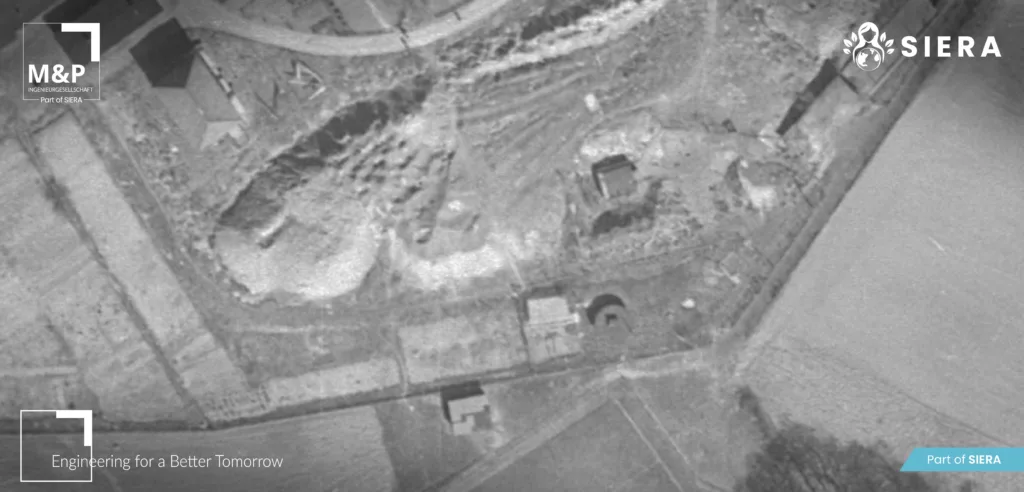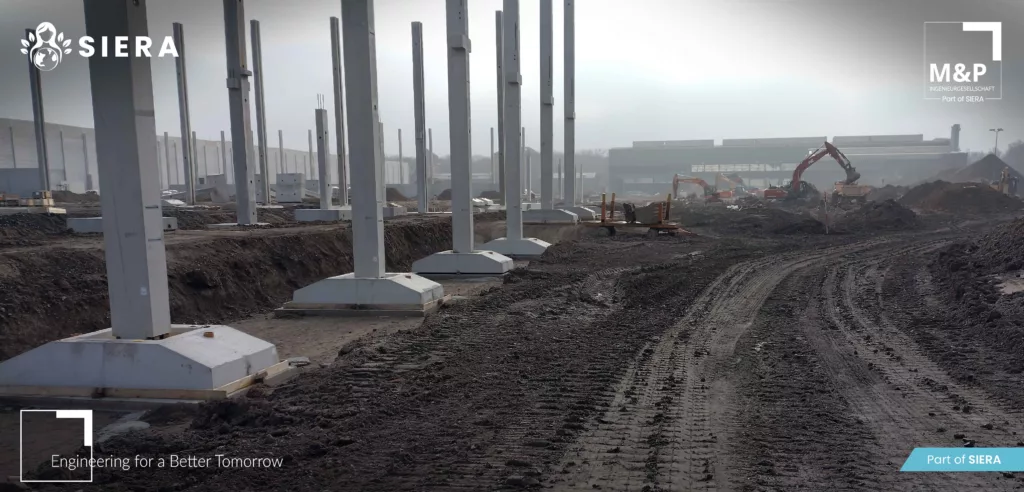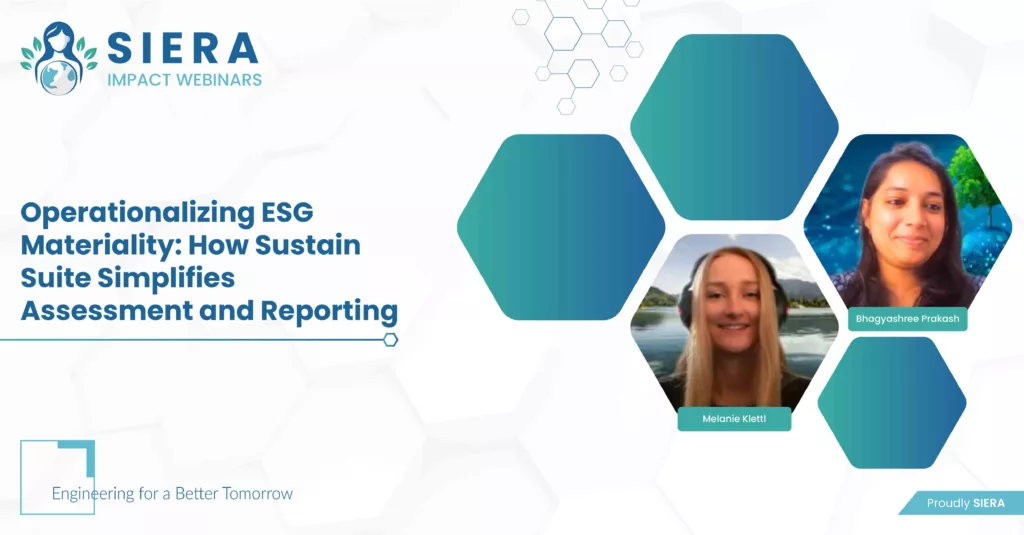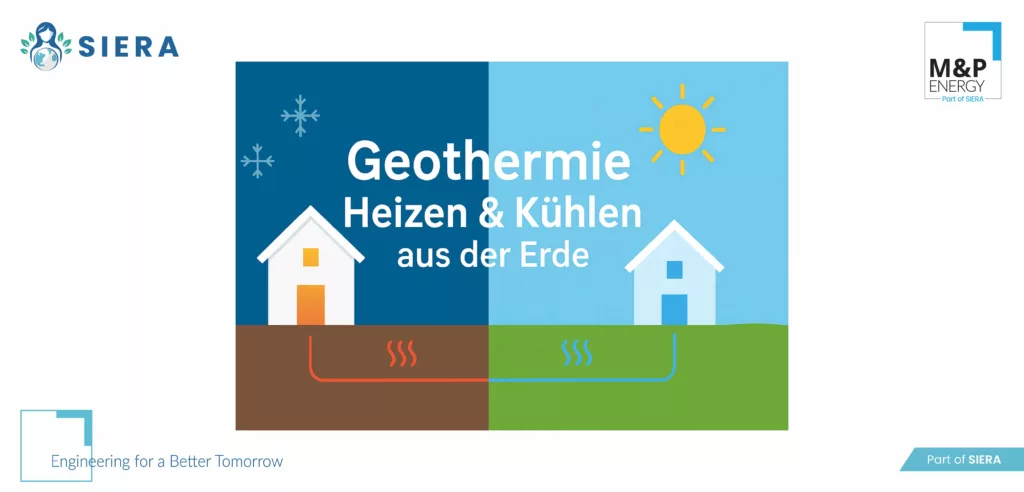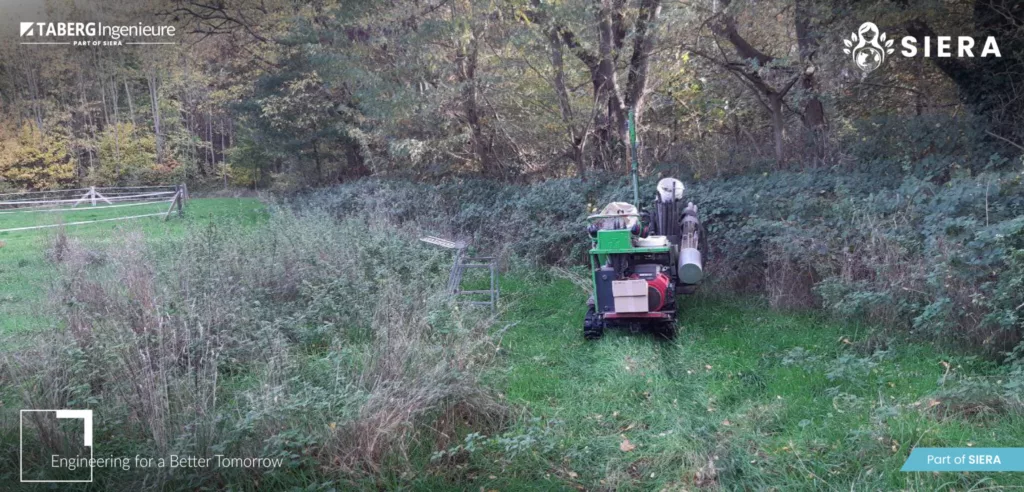The principles of classic contaminated site management
Responsibility for soil and the future
Soils are irreplaceable – they support our infrastructure, store water and form the basis of healthy ecosystems.
But many areas in Germany are polluted by historical uses. Contaminated site management is therefore one of the central tasks of contemporary engineering and environmental planning.
M&P Ingenieurgesellschaft Hannover – a member of the SIERA Alliance – combines technical competence with ecological responsibility. Our guiding principle:
Engineering for a Better Tomorrow.
What are suspected landfill sites?
Numerous municipalities in Germany have fallow areas, which are referred to in technical jargon as old landfill suspected areas. These are often former sand and gravel pits that were filled with unsorted waste after the Second World War until the 1970s – often known as the “mayor’s dump” or “wild dump”.
These sites pose risks to people and the environment and are now systematically examined, evaluated and, if necessary, remediated.
Legal basis
The legal basis is provided by the Federal Soil Protection Act (BBodSchG, 1998) and the Federal Soil Protection and Contaminated Sites Ordinance (BBodSchV, 2021).
They regulate terms, obligations and limit values and provide the framework for a nationwide uniform approach.
This ensures that hazards are assessed transparently and that remediation is carried out in a legally secure manner.
The four-stage process of contaminated site investigation
| Step | Designation | Goal | Methods | Result |
| 1 | Capture | Identify potential burdens | Trade registers, archives, aerial photographs | Initial assessment of the suspicion |
| 2 | Individual case research & orientation investigation | Narrow down areas that are actually suspicious | Historical analyses, soil and groundwater samples | Decision on detailed investigation |
| 3 | Detailed investigation | Quantitative assessment of the burden | Sampling, measurements, modelling | Risk assessment for humans, soil, water |
| 4 | Renovation planning | Developing a restructuring concept | Objectives, procedures, cost and schedule | Basis for implementation |
This structured approach is the core of classic contaminated site processing – scientifically sound, legally secure and transparent.
Stage 1 – Capture
In this phase, the systematic identification of all possible old sites and old deposits is carried out.
M&P Nord Hannover evaluates archives, trade registers and historical aerial photographs for this purpose. The result is an initial risk assessment and the creation of a land register.
Stage 2 – Individual case research and exploratory investigation
Here, suspicious areas are analysed in more detail:
2a – Historical research: Analysis of previous uses, accidents and eyewitness reports.
2b – Orientation examination: Initial soil and groundwater samples confirm or refute the suspicion.
This makes it possible to identify at an early stage whether further examinations are necessary.
Stage 3 – Detailed investigation
The detailed study provides quantitative data on the exposure.
By means of targeted drilling and analytical methods, M&P Nord determines the spatial distribution of pollutants and evaluates their dispersion.
These results form the basis for restructuring decisions and risk assessments.
Stage 4 – Remediation planning
If a hazard is confirmed, a tailor-made remediation concept is drawn up.
These include:
- Definition of restructuring goals
- Selection of suitable technical processes (e.g. soil replacement, in-situ cleaning)
- Coordination with authorities and owners
- Time and cost planning
The aim is an economically and ecologically sensible restoration of the area.
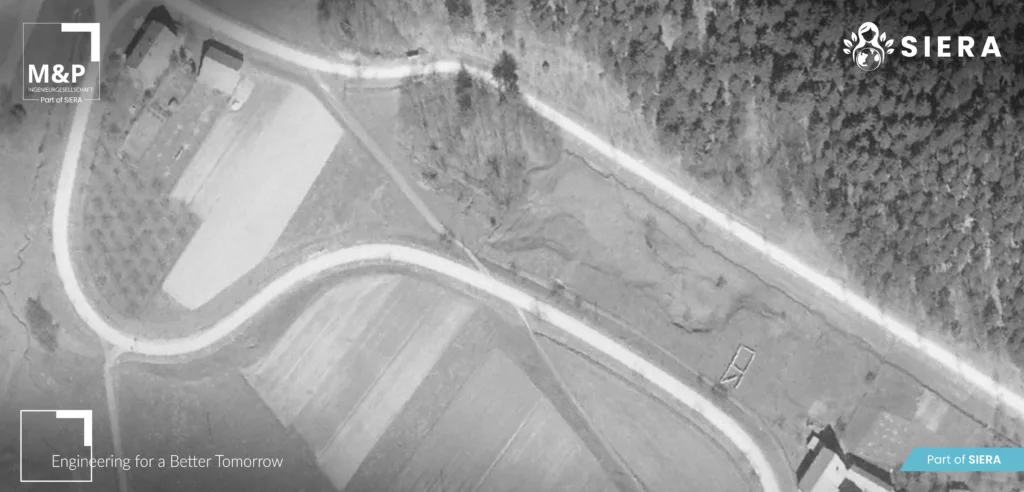
Practical example from Lower Saxony
On behalf of a district in Lower Saxony, M&P Nord – a member of the SIERA Alliance is currently carrying out historical explorations and orienting investigations on nine suspected landfill sites.
The uses range from residential areas and sports areas to a quarry that was shut down almost 100 years ago.
Through the evaluation of historical aerial photographs, morphological changes such as depressions and embankments of production waste were identified and checked by means of small ramming boreholes.
This creates a detailed picture of the subsoil conditions – an important basis for further assessments and, if necessary, remediation measures.
Modern technology complements classic methods
M&P Nord uses new tools to make exploration work even more precise:
- GIS-based data analysis
- Drone-based aerial photography
- 3D Drilling Data Models
- Geostatistical evaluations
These methods shorten project durations and increase data quality – an example of sustainable engineering practice in the sense of Engineering for a Better Tomorrow.
Sustainability and social responsibility
Contaminated site management makes a contribution to the land cycle economy.
Every renovated area opens up new possibilities for residential, commercial or nature conservation and contributes to the reduction of land consumption.
This means that contaminated site management is both environmental protection and site development.
Result
Classic contaminated site management offers a proven, structured framework for the assessment and remediation of contaminated soils.
M&P Ingenieurgesellschaft Hannover – a member of the SIERA Alliance stands for professional excellence, transparent communication and sustainable solutions.
With every project, we contribute to protecting soil and groundwater – and thus preserving our livelihoods for future generations.

